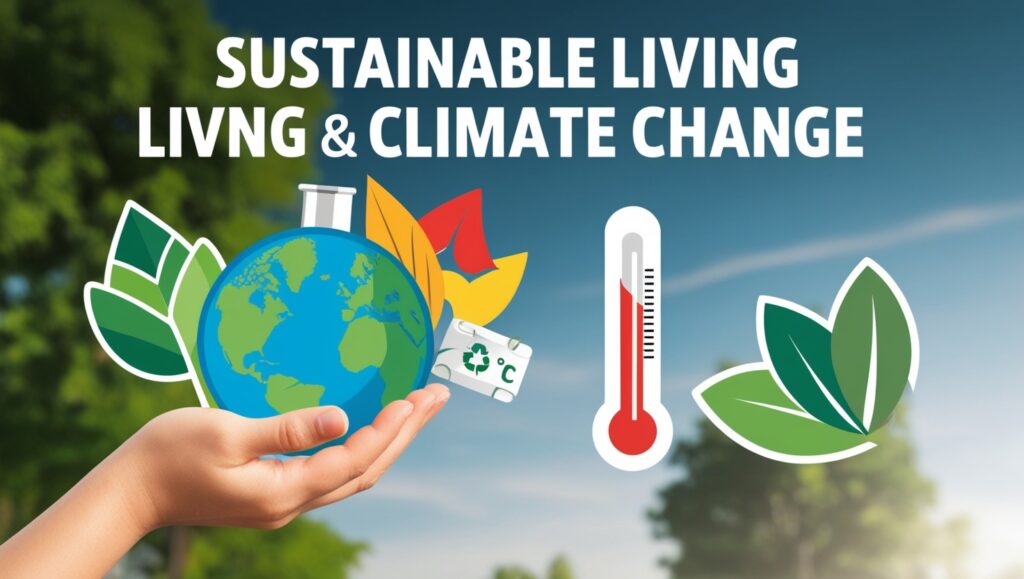The Impact of Sustainable Living on Climate Change
Climate change is one of the biggest challenges of our time, caused by human activities that release greenhouse gases into the atmosphere. Sustainable living is a lifestyle that aims to reduce our environmental impact by using resources more wisely and reducing waste. By adopting sustainable habits, individuals can play a significant role in combating climate change. This article will explore how sustainable living can help reduce the negative effects of climate change and why it is important for everyone to make changes.
1. What is Sustainable Living?
Sustainable living involves making choices that are good for the planet and future generations. It means using fewer resources, creating less waste, and minimizing harm to the environment. This can be achieved by adopting eco-friendly practices such as reducing energy consumption, conserving water, recycling, and choosing sustainable products.
2. How Does Climate Change Occur?
Climate change happens when greenhouse gases, such as carbon dioxide and methane, build up in the Earth’s atmosphere. These gases trap heat, leading to an increase in global temperatures, known as global warming. Human activities like burning fossil fuels for energy, deforestation, and industrial processes release large amounts of these gases, contributing to climate change.
3. Ways Sustainable Living Can Help Combat Climate Change
Sustainable living practices can directly impact climate change by reducing greenhouse gas emissions and conserving natural resources. Here are some key ways in which sustainable living can help:
a. Reducing Carbon Footprint
One of the main causes of climate change is the carbon dioxide released from burning fossil fuels for electricity, transportation, and industrial activities. By reducing our carbon footprint, we can lower the amount of carbon dioxide released into the atmosphere. Some ways to achieve this include:
- Switching to renewable energy sources like solar or wind power, which produce little to no carbon emissions.
- Using energy-efficient appliances that consume less electricity.
- Carpooling, cycling, or walking instead of driving, to reduce emissions from vehicles.
b. Conserving Water
Water conservation plays a crucial role in sustainable living and climate change mitigation. The process of treating and distributing water uses a lot of energy, often generated from burning fossil fuels.
- Fixing leaks and using water-efficient fixtures can save significant amounts of water.
- Using less hot water for daily activities like washing dishes or taking showers reduces energy consumption.
c. Reducing Waste Through Recycling and Composting
Waste contributes to climate change when it ends up in landfills and produces methane, a potent greenhouse gas. By recycling and composting, we can decrease the amount of waste that ends up in landfills.
- Recycling materials like paper, plastic, and glass reduces the need to produce new products from raw materials, saving energy and reducing emissions.
- Composting organic waste such as food scraps reduces methane emissions from landfills and provides nutrient-rich soil for gardening.
d. Supporting Sustainable Agriculture
Agriculture contributes to climate change through deforestation and the use of synthetic fertilizers, which release greenhouse gases.
- Choosing organic or locally grown foods can reduce the carbon footprint associated with transportation and harmful farming practices.
- Adopting a plant-based diet, even if only a few days a week, can significantly lower greenhouse gas emissions, as meat production is a major contributor to deforestation and methane emissions.
4. The Role of Individuals in Climate Action
While governments and corporations play a major role in addressing climate change, individual actions are also crucial. When more people adopt sustainable practices, it creates a collective impact that can drive larger societal changes. Here’s how individuals can make a difference:
- Advocating for green policies by supporting leaders who prioritize the environment.
- Participating in community cleanups to reduce waste and raise awareness about environmental issues.
- Educating others about the benefits of sustainable living and how it can slow down climate change.
5. Challenges of Sustainable Living
Although sustainable living can help mitigate climate change, there are challenges that need to be addressed:
- High initial costs: Some sustainable products, such as solar panels or electric vehicles, can be expensive to purchase, even though they save money in the long run.
- Lack of awareness: Not everyone understands the urgency of climate change or how sustainable living can help.
- Limited access: In some regions, access to sustainable resources, like recycling facilities or organic foods, may be limited.
6. Conclusion
Sustainable living is a powerful tool in the fight against climate change. By making small lifestyle changes, such as reducing energy use, conserving water, and supporting eco-friendly products, we can help lower greenhouse gas emissions and protect the planet. While there are challenges to adopting a sustainable lifestyle, the positive impact on climate change makes it worth the effort. Every action counts, and together, we can create a more sustainable future.
By understanding the connection between sustainable living and climate change, we can make more informed choices that benefit not only our lives but also the health of the Earth for generations to come.
See More


